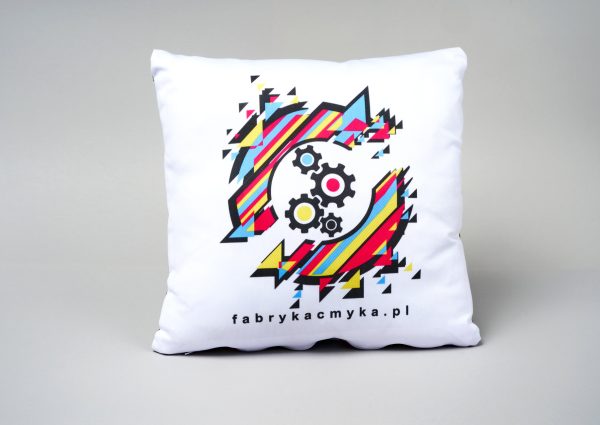SUBLIMATION
It is pretty simple printing process, recommended for low quantity and multi-colour prints, such as photos. The technology is suitable for marking items starting from 1 piece, and in full colour with tonal transitions. Its only disadvantage is the mix of the colour with the material (except the white material for sublimation - on which any printed colour will be originally reproduced).


It can be made , but the substrate, i.e. the mug, for example, must first be covered with a special varnish. White mugs are recommended for it. This is the most frequently chosen labelling technique in the production of advertising mugs and personalised gifts. Sublimation printing on mugs is characterised by high sharpness. The possibility to apply multi-colour designs and even photos is a great advantage as well.
Polyester materials are best sublimated with a 30 per cent polyester involved. Cotton and other natural fibres should be avoided. They do not have the right properties and structure to allow the paint to get into the fibres. Different logos or other advertising graphics can be printed on the materials in many colours without affecting the price. In this case, this method of labeling has more advantages than, for example, screen printing. With the screen printing, each colour used increases the cost of the final product.

OUR RECENT PROJECTS USING THIS METHOD
Advantages
OF SUBLMATION PRINTING
WIDE AREA OF APPLICATION
Using this method, we can successfully print on clothing or ceramics. Sublimation is applied to artificial materials, polyester, softschell, nylon and cotton substrate with polyester + 30%.
PRICE POLITICS FOR MULTIPLE COLOURS
Selecting multiple colours for printing does not increase the unit price
PRINT SHARPNESS
Prints made using the sublimation method are characterised by high sharpness.
PRINTS STARTS FROM 1 PIECE
No minimum print number required, the prints are available from 1 piece.
TONE TRANSITIONS
It is possible to achieve printing with tonal transitions. This can even be applied to the printing of photos.
DISCOVERY
The best reproduction of printed colours can be achieved on a white substrate
Frequently asked questions
Unfortunately no, neither cotton nor other natural fibres are suitable for sublimation printing.
You can, but the colour of that substrate will mix with the fiber and visually affect the original colour of the print. For example, on a substrate other than white you will never get a sublimation print of white, blue, pink etc.

Do you need more information?
Text to us to consult for the printing technique - we will match the best solution to your project, taking into account the quantity, budget and the desired final result.

